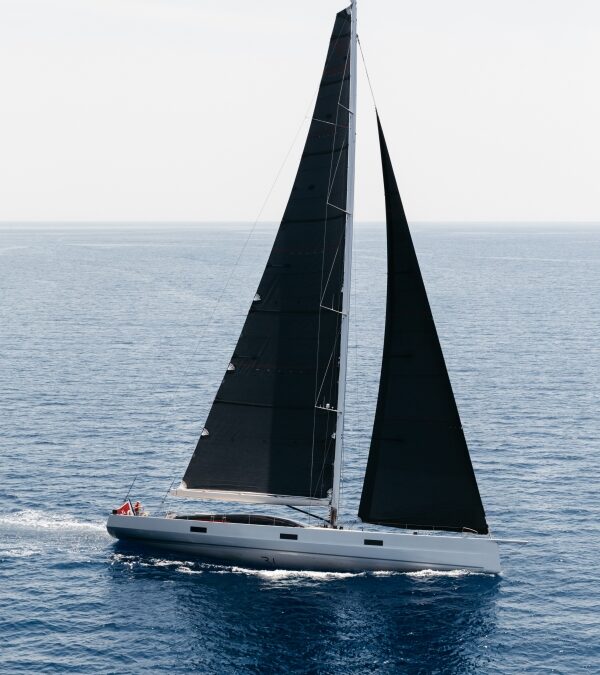Push Button Sailing –
the ease of moving with the wind
Beau LeBlanc, Harken hydraulics sales manager spoke to our editor about his relationship with sailing. He has worked for Harken for a year. Before that, he supplied hydraulics for Navtec for 20 years. He has a sailing background and participating in multiple regattas, racing competitively on the circuit. Clearly, he is an expert in both his professional and personal life.
In the last 15 years the superyacht industry has changed so much, a 100ft sailing yacht used to be classified ‘superyacht’ now we are talking about vessels that are 100 metres plus. In order to handle the increase in size, cruising yachts, racing sailing yachts and the huge mega sail yachts need to become more automated. The trend for everything is ‘bigger and bigger’. Loads have gone up but with advances in technology by companies like Harken, sailing is now easier than ever.
We talked all things hydraulic with Beau LeBlanc, Harken’s Hydraulics Sales Manager. Today’s hydraulic control packages offer push button sailing with the ability to control any conceivable array of functions including: winches, furlers, windlasses, bow thrusters, hydraulic cylinders, lifting keels, vangs and more.
Ever evolving technology is making these systems ever better, easier and more efficient.
With technology originally designed for superyachts, the technology of push button sailing is now well used in smaller vessels too where these boats want the ease of pressing a button to control their equipment. However, when applied to smaller yachts matching function with budget becomes more of an issue.
At the front of sailing technology there are other advantages. Push button sailing can mean less crew are needed than on a traditional sailing yacht. In turn, this means less accommodation required for crew quarters, less payroll and more space for guests or toys. Products like Harken’s Assisted Sail Trim use electrically-operated winches to control the sails and rely on a computer to adjust them to the wind and desired heel angle, combining data from GPS, the deck compass and sailing instruments.
Masts and booms can now be enormous, so powered winches are now standard on cruising and superyachts. Physical man power simply wouldn’t be enough to cope with the challenges that greater sail plan size gives the crew on a superyacht.
When designing a powered system, Harken gather information on the number of functions as well as flow and pressure requirements for each. Harken is committed to providing bespoke systems designed specifically to account for flow, pressure and other performance requirements of each unique project. Harken also talk to the client about how the boat will be used, what the owner’s interests are and what they want it to do, to assure the system will perform as expected.
A year in the life of a super yacht might include 50 weeks cruising around the Mediterranean under reduced sail plan then, 2 weeks per year attending a regatta where the crew must demonstrate the boat’s maximum capability—even when its design brief did not emphasize racing. These few weeks can put a full strain on the whole system. Where the owner wants to race, Harken ensures systems can excel on the race course!
A hydraulic system is comprised of three main components; power unit, values and electrical control box. These components provide the muscle to operate winches, cylinders and other function on the yacht. Each hydraulic system is designed specifically for the yacht based on the flow rate and pressure needed to maximize functions being used base on the equipment chosen to do the job. On larger yacht that list of function can be as high as twenty components being supplied by many different manufactures. Harken works with several hydraulic system designers and in-house boat builder’s design teams to help put the correct package together for each project on larger superyacht projects. Harken also manufactures a range of stand along systems ideal for the 15 to 30 meter performance cruising yacht operating around 10 functions.
With a plethora of labour saving devices for sailors Harken and other suppliers are providing the sail yacht industry with a technological boost to match the appeal of the traditional motor yacht.

